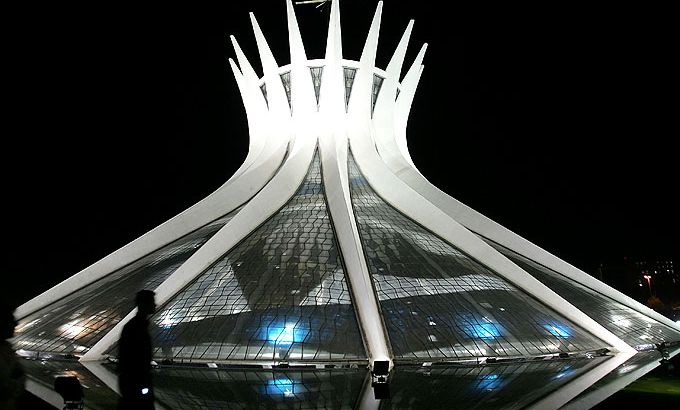Brazilian architect Niemeyer dies at 104
The man who designed much of Brazil’s futuristic capital and the UN headquarters dies in a Rio de Janeiro hospital.

Brazilian architect Oscar Niemeyer, who designed the main buildings of the futuristic capital, Brasilia, has died.
Niemeyer, aged 104, passed away in a Rio de Janeiro hospital late on Wednesday after battling kidney ailments and pneumonia for nearly a month.
Keep reading
list of 4 itemsEcuador spat: Trotsky to the shah, Mexico’s long history as home to exiles
Mandela’s world: A photographic retrospective of apartheid South Africa
‘Profoundly unjust’: Reactions to court overturning Weinstein’s conviction
|
“Architecture is done by governments for the rich … Poor people don’t get to take part, but they can be brought to a halt in front of a building which is so different that it sparks a moment of surprise and emotion.“ – Oscar Niemeyer |
Starting his career in the 1930s, Niemeyer’s distinctive glass and white-concrete buildings include such landmarks as the United Nations Secretariat in New York, the Communist Party headquarters in Paris and the Roman Catholic Cathedral in Brasilia.
He won the 1988 Pritzker Architecture Prize, considered the “Nobel Prize of Architecture”, for the Brasilia Cathedral.
“Brazil today lost one of its geniuses. It’s a day for mourning,” President Dilma Rousseff said in a statement posted on her official blog.
The architect’s body was to be flown to Brasilia on Thursday for a funeral wake at the presidential palace, one of his major works.
The body was then to return to Rio for another funeral wake followed by the burial, according to Rio Mayor Eduardo Paes.
Legacy
Niemeyer’s works can be found in Algeria, Italy, Israel, the United States and Cuba, whose longtime leader Fidel Castro was one of his personal friends.
“Architecture is done by governments for the rich,” Niemeyer, a lifetime communist, once said.
“Poor people don’t get to take part, but they can be brought to a halt in front of a building which is so different that it sparks a moment of surprise and emotion.”
Niemeyer created about 400 buildings in all, including the Serpentine Gallery in Hyde Park, London, and the Penang State Mosque in Malaysia.
He was born on December 15, 1907 in Rio de Janeiro into a middle-class family of German, Portuguese and Arab ancestry. He studied at the city’s Fine Arts Academy, becoming an engineer-architect in 1936. One of his first jobs was on the Brazilian pavilion at the World Fair of 1939 in New York.